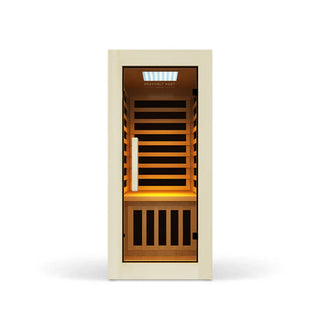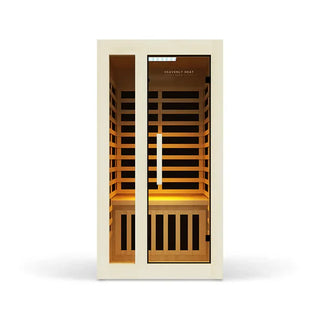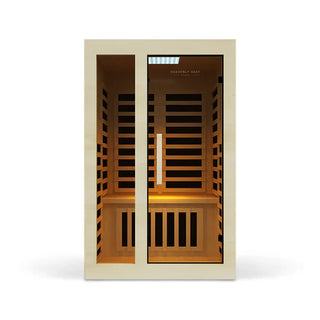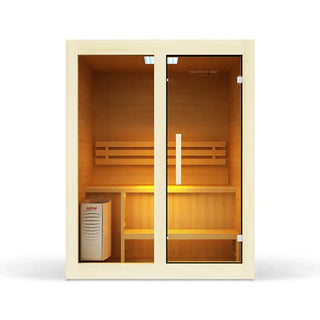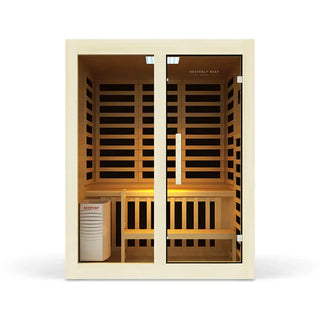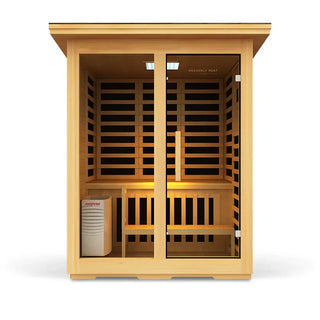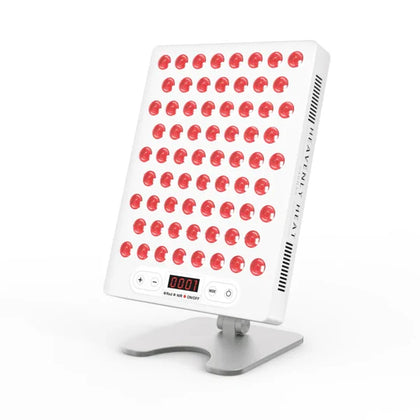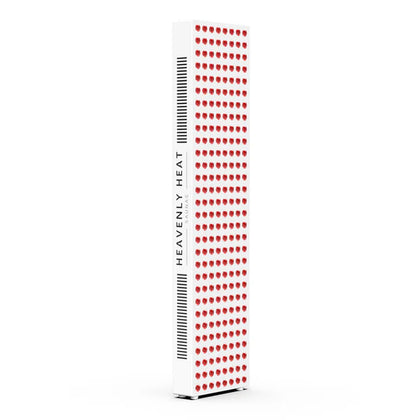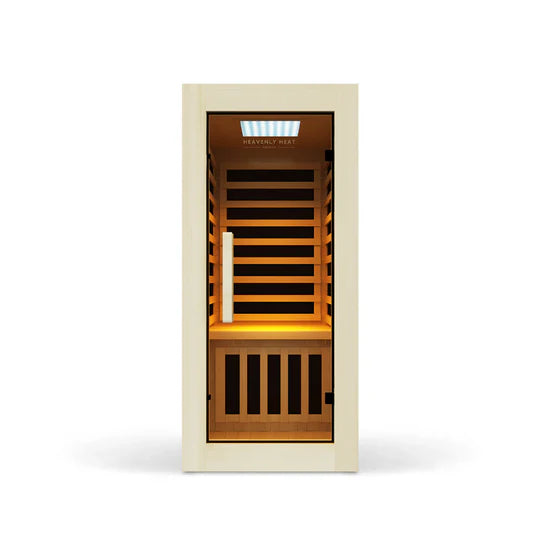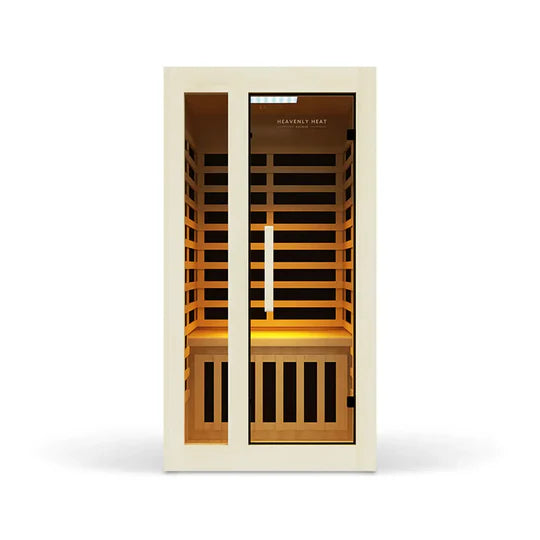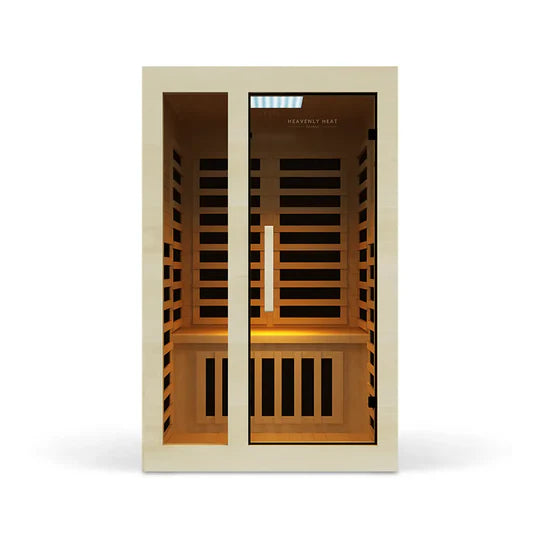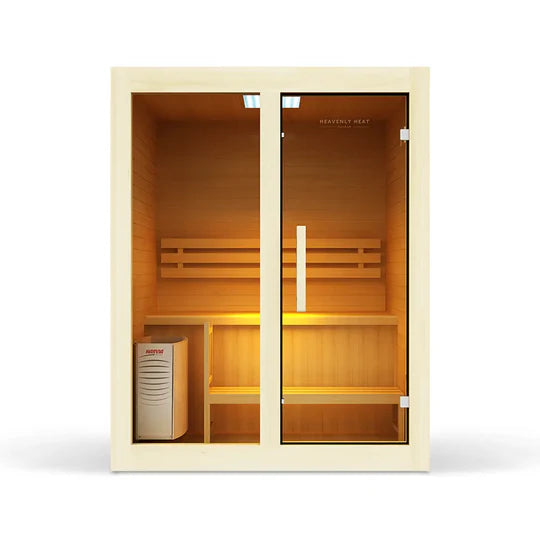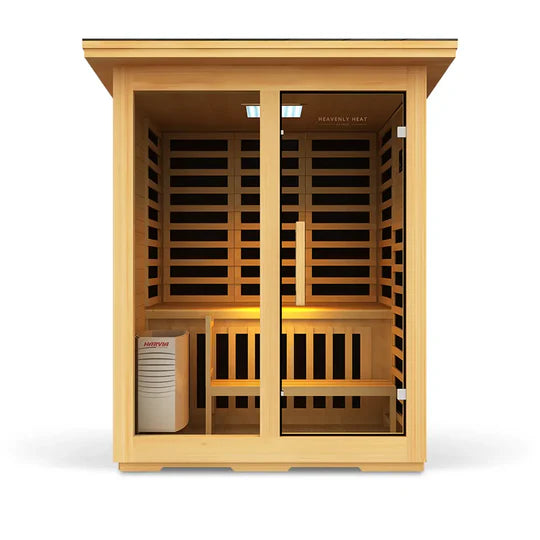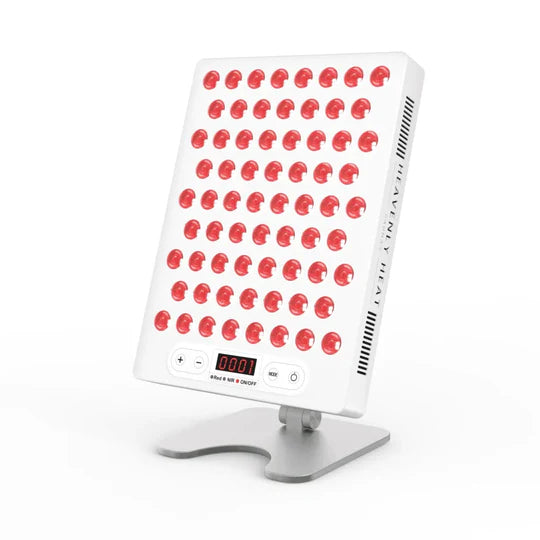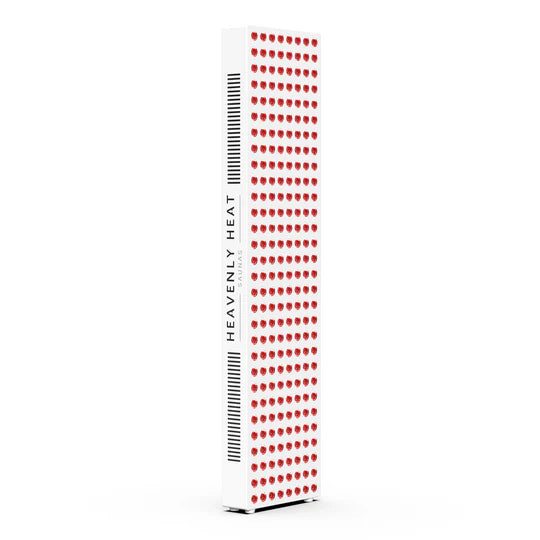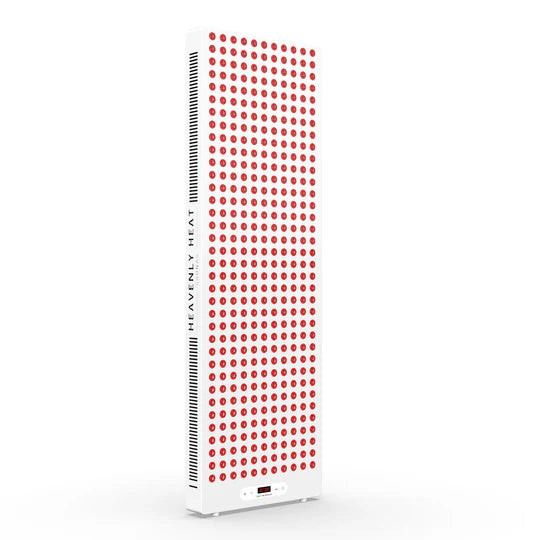Can Sauna Cause Yeast Infection?

Feeling constant itching, burning, and uncomfortable discharge? These common yeast infection symptoms can disrupt daily life and intimacy.
But could something as relaxing as a sauna actually trigger this irritation? Ignoring these signs can lead to worsening discomfort and frequent infections.
Curious if sauna use is a hidden culprit, and how to protect yourself? Keep reading to uncover the truth.
Table of contents
Key Takeaways
Saunas create warm, moist conditions that can encourage yeast and fungal growth on skin and surfaces.
Public saunas pose a higher infection risk than private ones due to shared spaces and harder hygiene control.
Sweating and wearing wet or tight clothes in and after saunas can increase your chances of yeast infections.
Showering immediately and thoroughly drying yourself after sauna use helps prevent fungal overgrowth.
Choose loose, breathable clothing and clean towels to reduce moisture buildup and protect your skin health.
What Is a Yeast Infection?
- Yeast can grow too much and cause problems: A yeast infection happens when certain yeasts, especially Candida albicans, grow too much in the body. Normally, small amounts of yeast live harmlessly on our skin and in areas like the mouth and private parts.
- Heat and moisture make it worse: When your body stays too warm or sweaty, the yeast grows faster and causes irritation and infection.
- It often shows up in sweaty body parts: Yeast infections usually appear in warm, damp places like the genitals, mouth, or skin folds.
Can Sauna Surfaces Harbor Yeast and Fungi?
- Fungi and yeast easily grow on sauna surfaces: Sauna surfaces can hold fungi like Candida and Aspergillus because they love warm, damp places. The heat and humidity inside the sauna make it easy for these germs to survive and grow.
- Sweaty benches and floors help fungi stick around: When people sweat in saunas, the moisture stays on benches, walls, and floors. This leftover sweat becomes the perfect spot for fungi to hang on and multiply.
- Not cleaning the sauna can lead to skin infections: If the sauna isn’t cleaned properly, you could catch fungal infections like athlete’s foot or get itchy rashes from the germs left behind.
- Wiping down sauna surfaces helps stop fungus from growing: Cleaning the sauna every time after use helps wash away the sweat and germs, making it harder for fungi to live and spread.
Are Public Saunas Riskier Than Private Ones?
Public saunas carry higher infection risks due to multiple users sharing benches and surfaces, increasing the chance of spreading harmful bacteria and fungi .
These germs thrive in the sauna’s warm, humid environment . Private saunas, with fewer users, are generally cleaner and pose less risk .
Maintaining hygiene in public saunas is challenging, and the lack of control over users adds to infection chances .
Does Sweating in a Sauna Increase Yeast Infection Chances?
Sweating in a sauna can increase the risk of yeast infections by creating a warm, moist environment where fungi thrive .
Excessive sweat can disrupt the natural balance of bacteria and fungi on your skin, especially in areas like the groin .
If you have an existing yeast infection, sauna use can worsen it by adding moisture and heat, which promote fungal growth .
Can Wearing Swimwear in a Sauna Increase Yeast Infection Risk?
Wearing swimwear in a sauna can increase yeast infection risk due to moisture buildup from sweat trapped by wet or synthetic fabrics.
This dampness combined with heat creates an ideal breeding ground for yeast. Changing out of wet swimwear promptly after sauna use and opting for breathable fabrics can reduce this risk.
Steam saunas may hold more moisture than dry ones, which could further increase infection chances.
Can Wearing Tight Clothes After Sauna Use Trigger Yeast Infections?
Wearing tight clothes immediately after sauna use can trap sweat and moisture, creating a warm environment for yeast to grow .
After sweating, your skin is more vulnerable to fungal growth if clothes don’t allow it to breathe. To reduce infection risk, wear loose, breathable clothing after your sauna session .
Can Sauna Use Worsen an Existing Yeast Infection?
Sauna heat and moisture can worsen an existing yeast infection by promoting fungal growth and irritating the skin .
Sweat keeps the skin damp, which triggers more yeast multiplication . Additionally, sauna exposure may weaken the immune system’s ability to fight infections , increasing inflammation and discomfort.
Is It Safe to Use a Sauna If You Have a History of Yeast Infections?
If you have recurring yeast infections, sauna use isn’t off-limits but requires precautions . Heat and moisture can disturb the natural vaginal flora balance, potentially triggering flare-ups .
To minimize risks, keep your body cool and dry, stay hydrated, wear breathable clothes, and shower immediately after sauna use .
Maintaining vaginal health afterward is important, and antifungal products may be helpful if needed .
What Are the Best Hygiene Practices to Avoid Yeast Infections After Sauna?
Shower Immediately After Sauna
- Showering right away removes the sweat yeast loves: When you leave sweat on your skin, it creates warmth and moisture, perfect for yeast to grow. A quick shower washes it away before it causes trouble.
- A fast rinse clears away hidden germs and fungus: Right after the sauna, your skin may carry fungi or bacteria. Showering quickly removes them and keeps your skin clean and healthy.
- Waiting too long makes yeast infection more likely: If you delay your shower, sweat stays trapped on your skin. This gives yeast a chance to grow and raises your risk of infection.
- Cleaning your skin quickly is the safest move: The best time to shower is within minutes of leaving the sauna. It’s a simple way to protect your body from fungal buildup and irritation.
Use Mild, pH-Balanced Cleansers
- Using mild cleansers keeps your skin healthy after sweating: Mild, pH-balanced cleansers help maintain your skin’s natural acidity, which fights off yeast overgrowth. After sweating in a sauna, your skin needs gentle care to stay balanced and protected.
- Harsh soaps can damage your skin and invite infection: Strong soaps strip away your skin's natural oils. This makes your skin dry and weak, giving yeast an easier chance to grow and cause problems.
- A “mild” label usually means it’s safe for sensitive skin: Cleansers marked as “mild” are usually free from strong chemicals. These are gentler and better for your skin after a sauna session when your body is more vulnerable.
- Fragrance and alcohol in cleansers can make things worse: Cleansers with perfumes, alcohol, or harsh detergents can irritate your skin. This irritation makes it easier for yeast infections to start, especially after sweating.
Thoroughly Dry Your Body
- Drying properly after sauna keeps yeast away: Drying your body well after a sauna is just as important as showering. Yeast loves warm, moist places, especially in folds of skin. Leaving moisture behind gives it the perfect place to grow.
- Some body parts need extra drying care: Focus more on areas like underarms, groin, and between your toes. These spots trap moisture and are where yeast infections often start if not dried properly.
- Rubbing too hard can hurt your skin: It’s better to gently pat your body with a clean towel than to rub. Rubbing can irritate your skin, making it easier for yeast to grow in sensitive areas.
- Giving your skin a moment to breathe helps: Letting your body air dry for a short time before dressing can remove leftover moisture. Even if you towel off, tight clothes on slightly damp skin can trap heat and wetness.
- Putting clothes on wet skin is a big mistake: Wearing clothes when your body is still damp keeps the skin moist longer. This encourages yeast to grow, so always make sure you're fully dry before getting dressed.
Wear Breathable, Loose-Fitting Clothing
- Wearing breathable clothes helps your sweat dry faster: Breathable clothing lets sweat evaporate quickly after a sauna, which keeps your skin dry and less welcoming for yeast.
- Tight clothes keep heat and sweat stuck to your skin: When you wear tight clothing after a sauna, heat and moisture get trapped near your skin. This creates the perfect spot for yeast to grow.
- Loose clothes let your body breathe better: Wearing loose clothes allows air to move around your body, especially in private areas. This airflow keeps those parts dry and reduces the chance of infection.
- Cotton and linen are the best choices after a sauna: Natural fabrics like cotton or linen soak up sweat and let your skin breathe. Moisture-wicking materials also help pull sweat away from your body.
- Wearing the right clothes lowers your chance of infection: Choosing breathable and loose clothes after a sauna cuts down trapped moisture. This small habit helps protect your skin and lowers the risk of yeast infections.
Change Out of Damp Clothes Quickly
- Wearing Damp Clothes Keeps Your Skin Wet for Too Long: When you stay in sweaty clothes after the sauna, moisture stays on your skin. This gives yeast the perfect chance to grow and spread.
- Changing Into Dry Clothes Helps Stop Infection Early: Putting on dry clothes right after a shower removes that wet layer where yeast can survive. It helps keep your skin dry and clean.
- Putting Wet Clothes Back On Can Bring the Infection Back: If you re-wear damp clothes, you're bringing moisture back to your skin. That makes it easier for yeast to come back and cause problems again.
- Making a Habit of Changing Clothes Protects Your Hygiene: If you always change right after your sauna, you’ll keep your body dry and lower your chances of getting a yeast infection. It’s a simple step that really helps.
Use Antifungal Powders if Needed
- Antifungal powders help prevent yeast infections: Antifungal powders are useful for those who are prone to yeast infections. These powders are designed to stop fungal growth and are especially helpful after a sauna session when the body is warm and moist, ideal conditions for yeast to thrive.
- Apply after showering and drying off: For best results, apply the powder after you've showered and thoroughly dried your skin. Moisture can encourage fungal growth, so dry skin is key before application.
- Focus on high-risk areas: Use the powder on spots where moisture tends to build up, like your feet, groin, and underarms. These areas are more likely to develop infections if not kept dry.
- Lasts until your next shower: Once applied, the powder’s protection typically lasts until your next shower. This makes it a practical part of your post-sauna hygiene routine.
Keep Sauna Towels Clean
- Use Fresh Towels Every Sauna Visit: Dirty towels carry bacteria and fungi, which increase the risk of yeast infections. Always bring and use fresh, clean towels each time you visit the sauna.
- Wash Towels Thoroughly with Hot Water: Wash towels after every use in hot water using a strong detergent to effectively kill microbes and prevent fungal growth.
- Avoid Fabric Softeners to Protect Your Skin: Fabric softeners can leave irritating residues on towels, so avoid using them to keep your skin safe and comfortable.
- Ensure Towels Are Fully Dry Before Reuse: Make sure towels dry completely between uses, as damp towels create a perfect environment for fungi to grow.
- Prevent Yeast Transfer by Not Reusing Towels: Reusing towels without washing can transfer yeast back onto your skin, increasing the chances of infection. Clean, dry towels maintain a safer, more hygienic sauna experience.
Maintain a Balanced Diet and Stay Hydrated
- Eating a balanced diet helps your body fight yeast: A balanced diet strengthens your immune system and helps control yeast growth naturally. Nutrients like vitamins A, C, E, zinc, and probiotics support your skin’s defense and maintain overall yeast balance.
- Drinking water after sauna keeps your skin healthy: Drinking plenty of water after a sauna keeps your skin and mucous membranes hydrated, which is vital to prevent infections. Dehydration dries out your skin, making it vulnerable to yeast overgrowth.
- Avoiding too much sugar stops yeast from growing: Avoid excess sugar because it feeds yeast, encouraging overgrowth. Eating well and staying hydrated after sauna sessions supports your body’s natural protection against yeast infections.

FAQs
Can the Heat from a Sauna Affect the Balance of Skin Microbiota and Lead to Yeast Overgrowth?
Sauna heat and increased sweating create warm, damp conditions that may disrupt the natural balance of skin microbiota, favoring yeast like Candida. This environment promotes fungal growth and can irritate skin, increasing infection risks if proper hygiene isn’t maintained.
Does Using Sauna Oils, Scents, or Skin Products in Saunas Influence Yeast Infection Risk?
Some sauna oils and skin products can disrupt vaginal pH or irritate skin, making infections more likely. Synthetic scents often contain harsh chemicals that worsen irritation. Avoid scented products before sauna use, especially if you have a history of yeast infections.
Are People with Certain Medical Conditions (e.g., Diabetes or Immune Disorders) More Susceptible to Sauna-Related Yeast Infections?
People with diabetes, immune disorders, or skin conditions like eczema are at higher risk. High blood sugar, weakened immunity, or broken skin allow yeast to grow more easily in warm, moist sauna environments.
Can Sauna Use Affect Yeast Infection Recurrence Rates in People Prone to Chronic Infections?
The warm, moist heat in saunas can promote yeast growth and potentially trigger flare-ups in people prone to infections. Maintaining good hygiene, drying thoroughly, and wearing breathable clothes after sauna use can help reduce these risks.


